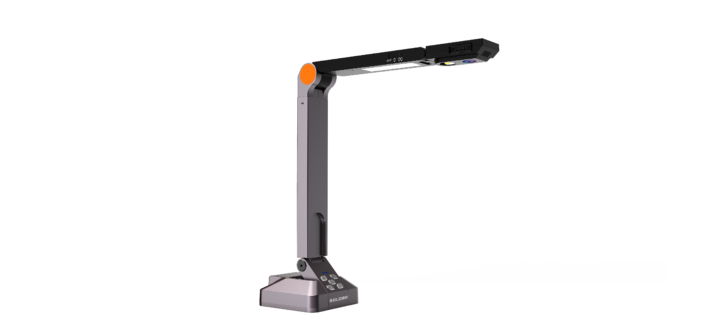
The Institute for Teaching Through Technology and Innovative Practices (ITTIP) at the Longwood University has a very specialized and important educational mission: to transform teaching and learning in PK-12 classrooms through the use of technology by providing high-quality professional development for educators and engaging programs for students, in order to maximize their learning experiences and opportunities in a globally competitive workforce. In other words, they teach teachers how to teach new STEM-based curriculum, specifically targeting underserved school divisions within the Southside Virginia Regional Technology Consortium and across Virginia. They also model these teaching and learning practices by offering an ongoing yearly calendar of camps and programs for students, with a majority of the opportunities funded through public and private grants. As the world shifted during COVID-19, the organization had to pivot and quickly adapt to keep the same level of instruction.
“Even though we have been in a virtual setting, we cannot let it limit us in supporting teachers and students through our programs or miss meeting the certain standard of quality we’ve always provided for our participants,” said Stephanie Playton, ITTIP’s STEM Learning Specialist. “We have to get creative to find different and better ways to reach those teachers and students, whether if it’s in a virtual setting or in person.”
Rather than put programs on an indefinite hold during the pandemic, the organization’s small staff put their heads together to come up with the best solution for offering their programs virtually. They pride on themselves on instruction that models exactly how teachers should instruct students to drive learning success. The question was, how would they replicate that hands-on, immersive experience they would typically achieve face to face, virtually? A laptop or PTZ camera wouldn’t cut it as it’s designed for only one thing: to capture faces. Teachers need to be able to demonstrate and show a variety of content, including paper documents, pages out of books, learning manipulatives, math problems, and science experiments.
For past in-person sessions, the institute has utilized HoverCam document cameras on an ad hoc basis to support close-up views. They realized that their old inventory would be incredibly useful in a virtual setting, and soon added two new HoverCam Solo 8Plus document cameras.
“What the HoverCam has enabled me to do is model how instruction can be done in a virtual environment,” said Playton. “We can use it to demonstrate things from as simple as referencing principles, where we have our hand underneath the camera to point out or highlight things as you’re talking to the teachers, such as lesson plans, or modeling how to enable participant observations of something that normally the whole class would be able to experience in person. For instance, we might use the time-lapse setting on the HoverCam to show changes in a sediment jar. For a computer science session, we can put a microcontroller underneath the HoverCam and model how to add input and output hardware, or demonstrate how robotic tools work and can be used in the classroom.”
Designed to improve learning equality in hybrid classrooms, Solo 8Plus allows teachers to share learning materials and demonstrations in the classroom and online friction-free and in unrivaled superior detail that can be seen by every student. Students learn best when they can easily read and closely examine materials. However, it can be challenging for teachers to share content with the details necessary for those in the back of the classroom or online when only equipped with a web camera. It has required teachers to awkwardly and unsuccessfully hold up books and other material or position the camera in attempt to capture them writing on whiteboard, which requires turning their back to students. This adds up to an incredible amount of valuable instructional time and engagement lost trying to overcome the poor viewing angles and quality that contribute to digital inequity prevalent in schools. HoverCam’s Solo 8Plus document camera rewrites this story, providing a versatile and intuitive tool that was built to capture learning content in the highest quality possible with ease and creating an equitable and productive learning environment for every digital citizen.
Teachers can adjust the angle of Solo 8Plus’ camera to thoroughly and easily share documents, books, images, artifacts, lab equipment, and more in up to superior 4K clarity. The zoom feature magnifies even the smallest details to give all participants a front-row seat. What makes the document camera even more compelling is its Flex 11 software, which provides a digital toolbox that is more than ready for the future of learning with built-in record, annotate, and texts and lesson plan creation capabilities. In addition, the picture-in-picture feature ensures that the instructor is always visible like they would be in class, reinforcing the teacher-student connection.
The Solo 8Plus’ small, rugged design is meant for portability. It can be moved from classroom to classroom or taken home. Teachers can set it up quickly by connecting it to a PC, Chromebook, or Mac via single USB cable. With one touch, they can initiate and schedule Zoom calls directly from the interface with no need to toggle between applications. It’s also compatible with popular remote conferencing programs, including Google Hangouts, Google Meet, and Microsoft Teams.
“The Solo 8Plus has been awesome for a virtual setting, but it’s also going to benefit me even when I go back into the classrooms,” said Playton. “When I’m teaching kids in-person this summer, we will still have COVID-19 restrictions; however, to model activities and hands-on technologies, I plan to pack my Solo with me so students don’t miss anything and feel completely immersed. I see it also providing an opportunity for students to use the technology to showcase their own work up close for their peers.”










